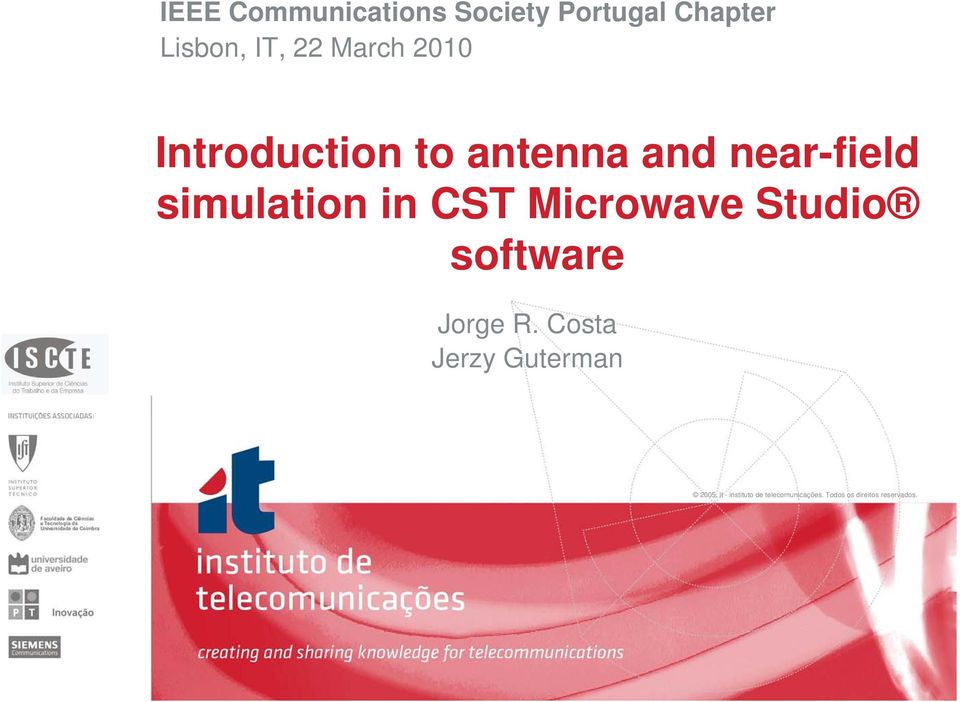

A simulation involving the complex chip impedance is shown in Figure 5. The 3D model can be treated as a block and included in a circuit simulation or, using true transient-circuit co-simulation, the chip can be in-serted into the 3D model as a SPICE or IBIS fi le. To allow these to be taken into account by the simulation, CST STUDIO SUITE also includes a schematic circuit simulation tool which is in-tegrated into the 3D design environment. The chip itself will have a characteristic inductance and capacitance which will aff ect the tuning of the antenna, and may also include a match-ing circuit to improve antenna effi ciency. Most RFID tags include an integrated circuit, which contains the data associated with that tag. The farfi elds can be used to identify the best position and orientation for the RFID tags relative to the reader and, using the built-in Calculate RFID Read Distance macro in CST STUDIO SUITE, the readable range of the tag can be calculated over the range of possible angles (Figure 3) given the output power and sensitivity of the reader antenna. Useful results when dealing with HF RFID tags include their S-parameters and their farfi elds (Figure 2). HF RFID tags can be simulated using the time domain solver or the frequency domain solver, depending on the anten-na geometry and model size (including the environment). This means that the impedance matching in HF RFID tags needs to be carefully optimized to allow the small antenna to operate effi ciently.

In HF RFID tags, the coil acts as a normal antenna, usually tight-ly folded to reduce its area. HF RFID systems on the other hand off er higher data rates and longer ranges, making them suitable for applications such as inventory tracking and electronic toll collection. WHITEPAPERRFID AnD WirElEss PoWEr trAnsFEr siMulAtion FroM tAG to sYstEMĬST AG WHITEPAPER RFID SIMULATION FROM TAG TO SYSTEM LEVEL 2

For these tags, simulation can be used to calculate the H-fi eld and surface currents induced in the coil (Figure 1), and to ex-tract an equivalent circuit for the tag.įigure 1: H-fi eld (left) and surface current density (right) for a typical LF RFID tag. Since they are electrically small, LF RFID tags are best simulat-ed using the frequency domain solver in CST STUDIOSUITE. These applications do not typically require high da-ta rates, but do need to be very robust. Common applications of LF RFID are animal tagging, industrial process control and smart card ticketing. They act as an inductive coil, and couple only through the magnetic fi eld. LF RFID tags are very much smaller than the wavelength of the reader fi eld. Full-wave EM simulation can capture the behavior of RFID devices in great detail, mak-ing it possible to investigate how a tag will behave without constructing a prototype.įor the purposes of simulation, RFID systems can be divided broadly into two groups: low frequency (frequencies up to tens of megahertz) and high frequency (hundreds of mega-hertz or greater). Interference and shielding eff ects can both aff ect the performance of tags, and they need to be taken into account when considering an RFID system. This means that RFID can be very sensitive to other objects in the environ-ment. Instead, the power to run the tag is supplied by the interrogating reader through a near-fi eld or far-fi eld coupling to the reader. Most RFID tags in common use are passive, which means that they dont carry any power source.

When interrogated by an RFID reader, this chip generates a unique data string which allows the tag to be identifi ed and, if necessary, can provide additional information to the reader. At the heart of all RFID systems is the tag an induc-tive coil or antenna usually connected to a small microchip. Radio frequency identifi cation (RFID) makes it possible to cat-alogue, label and track items quickly in demanding environ-ments. Analyzing the entire system with simulation allows the suitability of the chosen RFID system for the application to be investigated, and can reveal unforeseen interactions that can be hard to identify with measurement alone. This can be done at the level of the individual tag, but also for the entire system, including the reader, the tagged object and its surroundings. This article discusses the design and modeling of both low frequency (LF) and high frequency (HF) RFID devices using CST STUDIO SUITE.


 0 kommentar(er)
0 kommentar(er)
